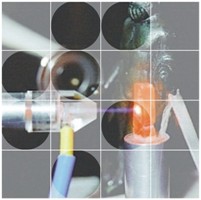More about the Institute |
|
Evolvement of research areas Research on elementary particles is carried out by large international teams, operating over periods of years, at the world's biggest accelerator facilities at CERN and DESY. Institute physicists are working on five such experiments, their main concern being with studies of electron-positron interactions at energies up to 190 GeV and studies of discrete symmetries in neutral kaon and Bmeson systems. The more recent and exciting highlights have been the first and spectacular observation of pair formation between two weak vector bosons, W' and W-, the discovery of the transformation of a B-meson into its anti-particle, and direct observation of time-reversal violation. Quantum gravity, unification of matter and forces, and heavy meson decay phenomenology are among the topics studied by the theoretical physicists. Other projects are designed to complement experimental findings in areas such as nuclear physics, ferromagnetism, and noble metal and sapphire surfaces. These numerically intensive applications are supported by one of the largest computers in the country. Nuclear physicists are concerned with measurements of nuclear and sub-nuclear degrees of freedom in electron-nucleus scattering, while atomic physicists are studying multi-particle excitations, provoked by X-rays or synchrotron radiation as well as with electron or ion bombardment. A 2 MV TANDETRON electrostatic accelerator was installed in the Institute in 1997, providing ions suitable for interdisciplinary research on materials and their surfaces, as well as being open to international collaboration. |
J. Stefan Institute, Jamova 39, 1000 Ljubljana, Slovenia, Telephone: +386 1 477 39 00 |

